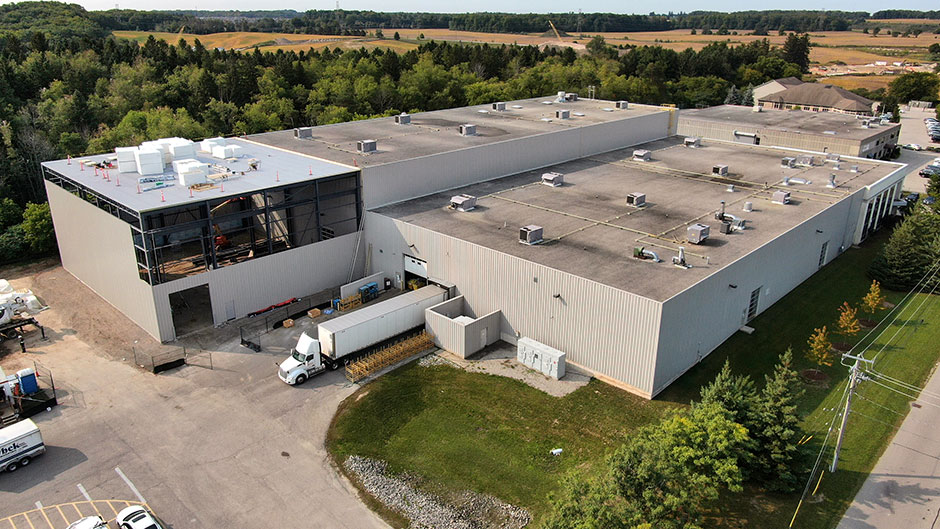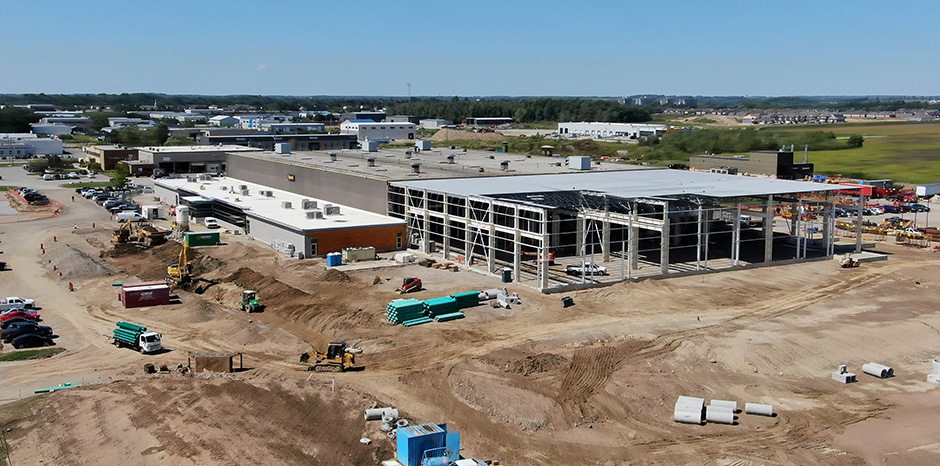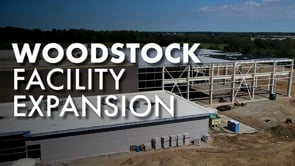Near the apex of the COVID induced economic slowdown, when fear and uncertainty broadly prevailed across the world community, Tigercat was involved in three expansion projects – breaking ground simultaneously for major facility additions in Woodstock and Kitchener Ontario, while completing construction of a new office and material processing R&D facility in Fremont, New Hampshire.

The drivetrain facility expansion in Kitchener, Ontario will bring additional expertise in-house.
Drivetrain component manufacture
The Tigercat drivetrain facility located in Kitchener produces axles and transmissions for most of Tigercat’s wheeled machines. The team also builds pump drives for drive-to-tree feller bunchers and some track machines, as well as track drive gearboxes. Just a few years ago, Tigercat invested heavily in machining and heat treating equipment for the production of axle and saw spindles.
In June, a twenty-week construction project commenced to further increase the breadth of the production activities by adding the floor space and specialized machinery required for the manufacture of gears. As plant manager, Michael Ellig explains, “This expansion and the related capital equipment expenditures will enable Tigercat to develop a new skill set in power skiving and oil press quench heat treating.” Power skiving is a continuous machining process where the tool meshes with the gear that is being produced – similar to the way a pinion and gear mesh in a gear train. Press quenching reduces distortion as the gears are being cooled.
“As was the case with the axle and saw spindles, adding this new process of machining, heat treating and final hardening will allow Tigercat to take command of our supply and quality of these critical gear components as we support the next economic expansion,” adds Michael.

The fabrication plant in Woodstock, Ontario in early September. The three-phase expansion includes office and manufacturing facilities, as well as an expanded yard and parking lot.
Fabricating in Woodstock
At Tigercat’s Woodstock facility the majority of weldments for swing machines are manufactured, including track driven harvesters, processors, feller bunchers and all knuckle boom loaders. These components and sub-assemblies then proceed a half hour down the road to the final assembly plant in Paris.
The expansion project consists of three phases. The first phase includes new offices, meeting and training rooms, and employee amenities. The second phase is a 50% increase in manufacturing area comprised of fabricating space, heavy duty robotic welding cells, large machine tools, and finishing and paint preparation operations. The third phase is an expansion of the parking and hard-surfaced yard areas.
According to plant manager and VP Mike Fischer, “The team we have assembled at this plant simply outgrew the amenities and the facilities. Over my 35 years with the company, and under the stewardship of Ken MacDonald, he has been absolutely unrelenting in his commitment to building a superior team, superior manufacturing facilities and a product line that can compete
on a global basis. The current situation with the global pandemic obviously threw some challenges our way. However, we continued to proceed full pace. Perhaps it is a contributing factor for our success that outside economic factors have rarely slowed down our pace of product development or expansion of manufacturing capacity.”
Material processing
Shortly after Tigercat purchased ROI in October 2019, construction began on a new 1 860 m² (20,000 ft²) facility in Fremont, New Hampshire to house the US based material processing team. Of course, there were COVID related delays, but in early August, the team began the move into the new building. According to Jim Oberg, product manager grinders and chippers, “The office has been set up to accommodate 24 employees and includes two conference rooms. The shop area was developed to allow the team to focus on developing and prototyping new machines to bring to market.”
In addition to these expansion projects, owner and CEO, Ken MacDonald, explains that additional investments have been made throughout the company’s facilities. “Inside almost all of our manufacturing buildings, we have continued with the installation of new welding robots, metal cutting lasers with semi-automated load and unload material storage towers and more computer-controlled boring mills.”
By year’s end, Tigercat’s total facility footprint spanning Canada, the US and Sweden will be a million square feet (93 000 m²). At some point, the COVID era will end and plant tours will resume. Start your training now. There will be a lot of walking.




